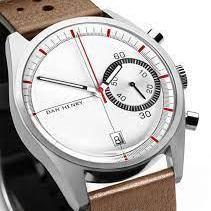Technique for pinion alignment for reassembly
-
Recently Browsing
- No registered users viewing this page.
-
Topics
-
Posts
-
By watchweasol · Posted
Hi other than testing the coil without the proper tools it will be difficult. If you +an rig up an external supply and attach it to the cut block you may be able to pick up the pulses on the chip if not on the coil. i have attached the parts sheet for the watch 9362 which gives you the part number of the cut board assembly, whether this part is still available or not , who knows. ETA 9360, 9361, 9362.pdf -
By nevenbekriev · Posted
Hi and welcome. First of all, check the power reserve. If the watch is runing, this means the spring is attached to the barrel arbor. If there is no end of winding, this probably means that the spring is not attached to the barreland it's outer end is slipping. In such case, the watch will run, but the power reserve will be small - about several hours -
By watchweasol · Posted
Hi welcome to the forum. One can only reiterate the diagnosis already made by clockboy mainspring problem. But before tearing it to pieces take a little time to read the attached file to acquaint yourself with all the various parts. TZIllustratedGlossary.pdf -
We think about these preps as "one-dips" partly because they are terrific solvents but also because the parts they are used on are often cleaner in general than many other parts. But old oils petrify, and even something like B-Dip can't clean up over-soiled parts without some extra effort, as mentioned above. There is an intermediate step during cleaning where the solvent can partially dissolve tarry residues so they have a more liquid varnish-like consistency, and that could well be what you are seeing on the coils after two washes. I wouldn't worry that your B-Dip was contaminated before you used it on this hairspring, but it I wouldn't re-use that aliquot AFTER this cleaning!
-
Welcome to the forum, enjoy.. Normally if a hand wound watch does not fully wind ie just keeps winding there is an error with mainspring, either slipping around its winding arbour or the mainspring is broken.
-






Recommended Posts